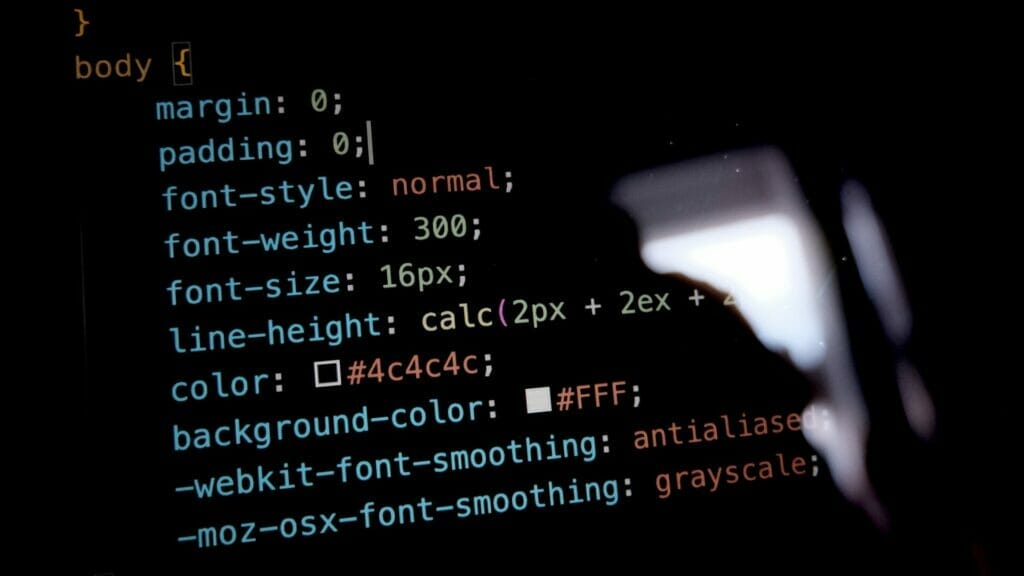The Differences Between HTML, CSS & JavaScript
When you’re designing or developing a website, it’s important to be aware of the three different coding languages: HTML, CSS, and JavaScript. Each language has its own strengths and weaknesses, so knowing when to use each one is essential for creating a well-rounded website.
For better understanding, you can imagine HTML is your face and body, CSS is your clothes and JavaScript is your accessories.
HTML – Your Face & Body (Content & Layout)
HTML is the language that determines how documents and web pages are displayed in a web browser. It is the language for the building blocks of any website.
CSS – Your Cloths (Styling & Look)
Cascading Style Sheets (CSS) is a popular style sheet language that determines how a document created in HTML is styled. It can control the colours, font styles, layout, and responsive features of a document.
JavaScript – Your Accessories (Interactive Elements)
JavaScript can help you change CSS and HTML elements on your website after the site has been loaded. You can create dynamic content that will respond to users’ actions and help create a more engaging experience for everyone.
What’s The Difference?

HTML is the standard markup language for creating Web pages. — W3 Schools
Used to create the structure:
- Controls the layout of the content
- Provides structure for the web page design
- The fundamental building block of any web page
CSS stands for Cascading Style Sheets language and is used to stylize elements written in a markup language such as HTML. — Hostinger
Used to style the website:
- Applies style to the web page elements
- Targets various screen sizes to make web pages
- Primary handles the “look and feel” of the web page
JavaScript is a text-based programming language that allows you to create interactive elements on your web page. — Semrush
- Adds interactivity to a web page
- Handles complex functions and features
- Programmatic code which enhances the functionality
What Can You Do With Each Programming Language?
If you’re new to website development, you may be wondering what HTML, CSS, and JavaScript are. These are three of the most important programming languages used to create websites. Here’s a quick overview of each:
- HTML (Hypertext Markup Language) is used to create the structure of a website.
- CSS (Cascading Style Sheets) is used to style the appearance of a website.
- JavaScript is a robust programming language that allows you to customize the HTML and CSS components of a website to match your specifications.
If you’re having trouble with a particular component of your website, knowing the difference between these three programming languages can help you diagnose the problem and find a solution.
Web Development & Coding Languages
There are many different coding and programming languages that can be used to develop a website. If you’re interested in web development, you’ll need to know about some of the most popular coding and programming languages. HTML, CSS, and JavaScript are three of the most common, and understanding them is essential for anyone looking to create a website. Ruby and PHP are two other popular languages, but they’re not as essential as the three primary languages mentioned above. Hence, for beginners, HTML, CSS and Javascript should be enough for you to understand the basics of web design and development.
Each of these web development languages serves a different purpose. For example, Ruby is a scalable and fast programming language that can help you build an extensive website or program in a short time. When paired with the Ruby on Rails framework, it gives developers practically everything they need to build a website. With a language like SQL, developers can maintain and optimize large databases in a much more streamlined manner.
Different types of projects use different languages. Many professional web developers also have their preferences that they use even if other programming languages have been more popular. Various platforms are built in different languages. For example, WordPress uses powerful PHP code even though HTML and CSS are used as well.
The language that you use for your project depends on your specific goals and objectives. By understanding what your goals are, you can determine which languages will be best suited for developing your website or application. This will help ensure that your project is successful and meets all of your business objectives.
What Is HTML?

HTML (Hypertext Markup Language) is a programming language that is used to create the structure of websites. It is relatively simple yet powerful and allows for various effects, colours, fonts, and graphics. Any text file can be tagged with HTML to achieve the desired results. If you are new to programming, HTML would be a great place to start. Once you are familiar with HTML, you can enhance your markups with CSS (Cascading Style Sheets) and JavaScript.
What Can You Do With HTML?
The main reason to learn HTML is that it allows you, as a website owner, to create the basic structure of your website. You can then use any other coding language to enhance the design.
- Will significantly increase the control and flexibility of your website with the basic knowledge of HTML.
- Will be able to make changes to the websites on your own.
- You are able to use HTML to do some minor changes even though the website has implemented many complex functions.
What Is CSS?

CSS is a style sheet language focused almost entirely on improving the presentation of HTML elements. CSS can be used to make your website appear visually appealing and modern. By understanding the basics of CSS, you can make changes to improve the look and feel of your website to better reflect your company’s image.
What Can You Do With CSS?
Although CSS is mostly used for creating static visual effects, the latest versions of the programming language offer some functionality for very simple animations.
- You can use CSS to change the colour of text on a web page by adding “style” code to the HTML code that’s already on your page.
- CSS can also be used to change the layout and formatting of your website.
- You can improve the look of your website and all the HTML you’ve already added to it.
What Is JavaScript?

JavaScript is an important programming language for website owners who want to make their sites more interactive. This makes it the most complex of the three standard programming languages. HTML provides the structure for a website and CSS allows you to control the presentation of a site. With JavaScript, you can add a layer of interactivity to the CSS and HTML elements on your website, which is highly recommended if you want your website to appeal to modern customers.
Most modern websites come with an interactive menu button that can be clicked to display a selection of areas on the website. The menu button usually reveals a small menu on the side of the page, which is powered by JavaScript and can make your website appear to be more modern and sophisticated. This menu can be used to navigate to different areas of the website quickly and easily.
A basic understanding of JavaScript is all you need to manipulate the various interactive features of your website to perform a wide range of actions. If you want complete control over the design and function of your website, you should know at least some of the coding involved with JavaScript.
What Can You Do With JavaScript?
The widespread adoption of JavaScript has led to its use in a variety of contexts. Here are some examples of things you can do with JavaScript:
- Create a calculator for your website
- Create various keyboard shortcuts that allow users to effortlessly navigate to other pages
- Play animations when users scroll down the page
Since you can change your HTML and CSS elements with JavaScript, this can be a very beneficial language to learn. With its growing popularity, learning JavaScript can open up a number of possibilities for you and your website.
Best Resources To Learn Web Development Languages

Web development languages are in high demand these days. No matter which programming language you want to learn, there are plenty of resources available online that can help you get started. If you’re looking to improve your knowledge and understanding of the many common web development languages, here are some fantastic resources that will allow you to enhance your skills in this area:
Front-end languages:
HTML5:
https://www.w3schools.com/html/
https://www.codecademy.com/learn/learn-html
CSS3:
https://www.w3schools.com/css/
https://www.codecademy.com/learn/learn-css
Bootstrap:
https://www.w3schools.com/bootstrap/
JavaScript:
https://www.codecademy.com/learn/introduction-to-javascript
Back-end languages:
https://www.w3schools.com/python/
https://www.codecademy.com/learn/learn-python
Ruby:
https://www.codecademy.com/learn/learn-ruby
PHP:
https://www.w3schools.com/php/
https://www.codecademy.com/learn/learn-php
Conclusion: HTML vs CSS vs JavaScript
It is possible to develop and maintain a website for your business without having any knowledge of coding, but having a basic understanding of the more common programming languages will give you more control over how your website looks, feels, and performs. Therefore, it is beneficial to learn at least some coding if you want to build or edit your website without assistance.
If you need any assistance on your website, you are welcome to contact us – Web Design Malaysia.


